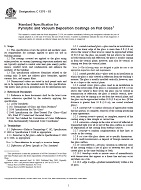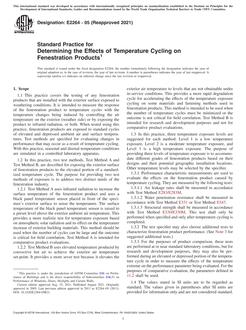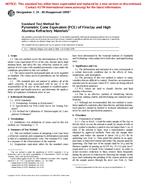1.1 This guide for characterizing collagen-containing biomaterials is intended to provide characteristics, properties, and test methods for use by producers, manufacturers, and researchers to more clearly identify the specific collagen materials used. With greater than 20 types of collagen and the different properties of each, a single document would be cumbersome. This guide will focus on the characterization of Type I collagen, which is the most abundant collagen in mammals, especially in skin and bone. Collagen isolated from these sources may contain other types of collagen, for example, Type III and Type V. This guide does not provide specific parameters for any collagen product or mix of products or the acceptability of those products for the intended use. The collagen may be from any source, including, but not limited to, animal or cadaveric sources, human cell culture, or recombinant sources. The biological, immunological, or toxicological properties of the collagen may vary, depending on the source material. The properties of the collagen prepared from each of the above sources must be thoroughly investigated, as the changes in the collagen properties as a function of source materials is not thoroughly understood. This guide is intended to focus on purified Type I collagen as a starting material for surgical implants and substrates for tissue engineered medical products (TEMPs); some methods may not be applicable for gelatin or tissue implants. This guide may serve as a template for characterization of other types of collagen.
1.2 The biological response to collagen in soft tissue has been well documented by a history of clinical use (1, 2) and laboratory studies (3, 4, 5, 6). Biocompatibility and appropriateness of use for a specific application(s) is the responsibility of the product manufacturer.
1.3 The values stated in SI units are to be regarded as standard. No other units of measurement are included in this standard.
1.4 Warning–Mercury has been designated by EPA and many state agencies as a hazardous material that can cause central nervous system, kidney, and liver damage. Mercury, or its vapor, may be hazardous to health and corrosive to materials. Caution should be taken when handling mercury and mercury-containing products. See the applicable product Material Safety Data Sheet (MSDS) for details and EPA's website (http://www.epa.gov/mercury/faq.htm) for additional information. Users should be aware that selling mercury or mercury-containing products, or both, in your state may be prohibited by state law.
1.5 The following precautionary caveat pertains only to the test method portion, Section 5, of this guide. This standard does not purport to address all of the safety concerns, if any, associated with its use. It is the responsibility of the user of this standard to establish appropriate safety and health practices and determine the applicability of regulatory requirements prior to use.
Product Details
- Published:
- 08/01/2009
- Number of Pages:
- 13
- File Size:
- 1 file , 200 KB
- Redline File Size:
- 2 files , 320 KB


